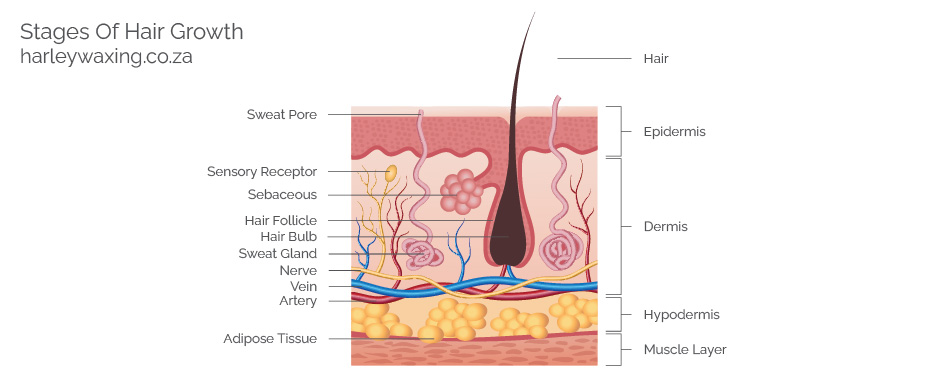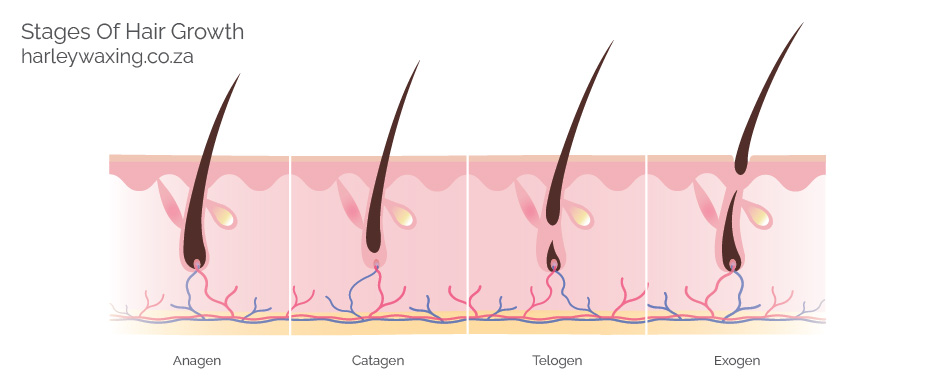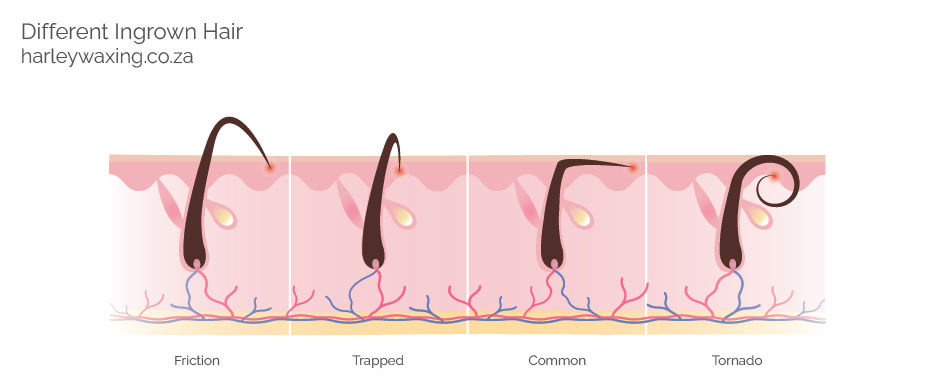At Harley Waxing, we believe that understanding the structure of the hair and skin, and the way hair grows, is an essential part of providing a professional waxing service.
Keratin is the main building block of hair. It is a protein that protects our hair from breakage and is also found in our nails and skin.

As follicles cease to produce hair, they shrivel up, and the lower part of the bulb degenerates. These resting follicles are simpler and much shorter structures than the active ones. At the base of the resting follicle, the hair, if still present, forms a club that is anchored by keratinous strands to the epithelial sac. Close inspection of a hair removed in the resting stage will show the shallow position of the hair. It sits almost on the skin’s surface and has a ‘full stop’ on its root end. This rounded club is a ball of cells and the lower part of the epithelial sac, called the hair germ, from which the next generation of hair develops.
The Anagen, Catagen, Telogen and Exogen sequence of events repeats itself until an internal or external influence causes a cessation in regrowth.

The amount of hair we have on our bodies depends upon many factors, including the seasons, climate, hormones and hormonal changes, medication, gender and overall state of health.
Ingrowns are hairs that, on emerging from the follicle, either grow along the skin’s surface or turn back into the follicle opening and become compacted. A keratin plug, formed by dead skin cells and sebum, is a typical cause.

(7/10)
The Harley Wax Training Manual & Product Guide is a complete overview to our products and waxing system for the Hot Wax, Strip Wax and Film Wax.
Client consultations are a crucial part of being in the professional beauty industry. Download your copy.

Are you a therapist looking to offer the best waxing experience, or a client searching for a skilled professional? We connect clients with expert Harley Waxing therapists for superior results. If your therapist isn’t using Harley Wax, introduce us—if they switch, your next waxing treatment is on us!